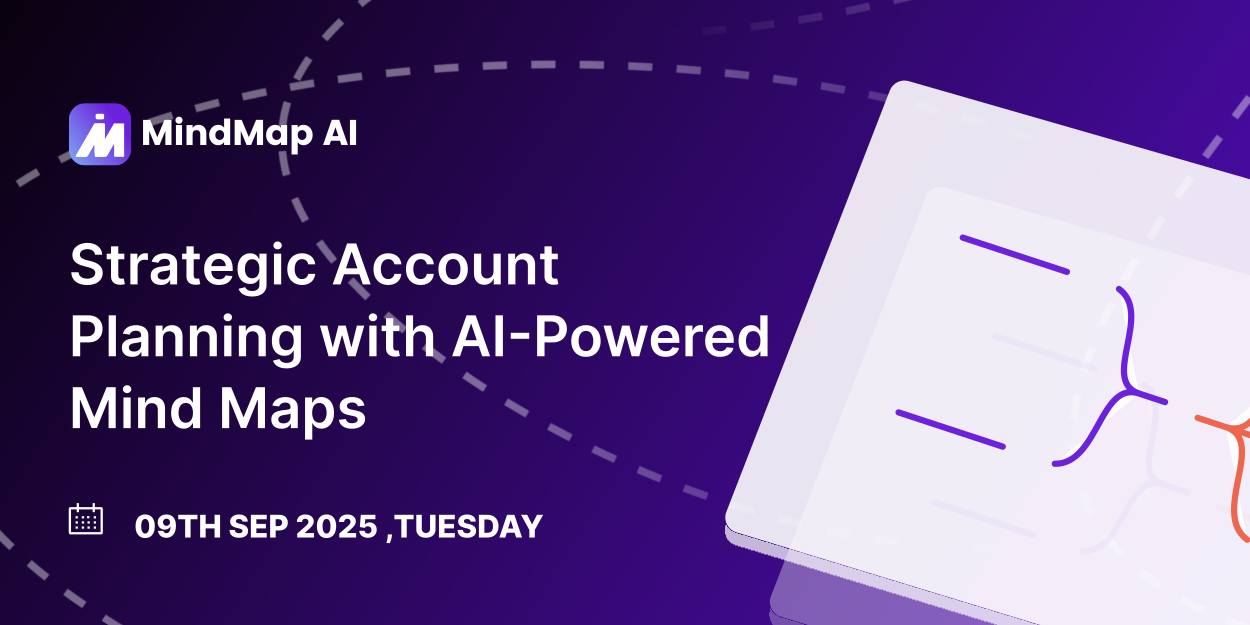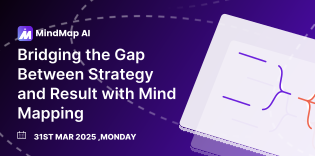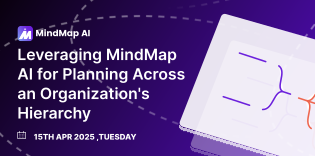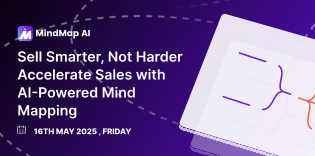
In this webinar hosted by MindMap AI, Key Account Management Consultant Warwick Brown showed how pairing mind mapping with AI transforms account planning. Traditional plans, Word docs, spreadsheets, rigid templates are heavy, linear, and hard to maintain. Mind maps make planning lighter and more visual, while AI adds speed, structure, and creativity. With color coding, tags, and collapsible nodes, teams can brain-dump ideas, reorganize them quickly, and spot patterns without losing clarity.
Warwick built a live account plan starting from core nodes, stakeholders, current state, goals, and actions, and used AI to expand branches, summarize research, and surface workshop ideas or outreach strategies. The payoff is speed and focus: what might take days of manual writing can be outlined in minutes, freeing consultants and account managers to move faster from planning to execution and client impact.
Why Use Mind Mapping for Account Planning?
Simplifies complex client information into visual, digestible branches.
Encourages free-form thinking and creativity compared to static documents.
Enhances collaboration by letting clients and teams share mind maps in real time.
Makes account plans “living documents” with easy updates and dynamic structure.
Helps consultants and managers quickly connect insights to actionable strategies.
Common Challenges in Account Planning Today
Overwhelming templates that bury insights in pages of text.
Difficulty aligning teams who aren’t equally close to the client.
Lack of client collaboration in building the plan itself.
Account plans that quickly become outdated and forgotten.
Blank-page syndrome, professionals not knowing where to start.
How MindMap AI Supports Account Planning
AI Copilot: Expands, restructures, or summarizes branches on demand.
File Uploads: Import meeting notes, research reports, or financials to auto-create nodes.
Collaboration Tools: Share maps with clients or colleagues for instant updates.
Tagging & Icons: Organize and scan maps visually for faster recall.
Outreach & Workshop Mapping: Generate training outlines, objection handling notes, and sales sequences within the account plan itself.
What Goes Into a Strong AI-Powered Account Plan?
Clear Framework: Start with key nodes like stakeholders, goals, risks, and actions.
Context: Upload supporting docs or add main branches to guide AI expansions.
Visual Organization: Use tags, colors, and icons to surface important data.
Balanced Input: Blend AI suggestions with your own expertise.
Iterative Updates: Keep the map living, add client feedback and evolving needs.
Key Takeaways from Warwick’s Webinar
Mind Maps Reduce Complexity
Account planning becomes faster and less burdensome when captured visually instead of in long reports.
Collaboration Becomes Effortless
Sharing maps with clients in real time makes planning sessions more engaging and transparent.
AI Adds Speed and Structure
From expanding branches to summarizing research, AI automates repetitive planning tasks.
Flexibility Builds Stronger Strategies
Maps can be reorganized, collapsed, or reshaped in minutes, making them living documents.
Practical Impact is Immediate
From workshops to outreach plans, mind maps move teams from brainstorming to execution with confidence.
Frequently Asked Questions (FAQ)
1. How does MindMap AI improve traditional account planning?
MindMap AI transforms static account plans into living, visual documents. Instead of struggling with text-heavy reports, you can create branches for stakeholders, current state, goals, and actions, then expand, summarize, and refine them instantly with AI.
2. Can I share account plans directly with clients?
Yes. Warwick highlighted that mind maps work great as collaboration tools. You can share maps during meetings, walk clients through them, and share them afterward, so they can view anytime without juggling endless email attachments.
3. What if I manage dozens of accounts?
You can create one detailed map for key accounts, or build a portfolio map with placeholders for multiple clients. MindMap AI makes it easy to organize accounts by priority, stage, or sector.
4. How can mind maps help with sales growth?
By mapping objections, outreach sequences, and workshop ideas directly into your account plan, you turn insights into executable strategies. This makes it easier to pitch, negotiate, and close deals.











